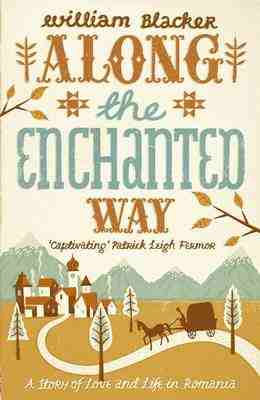As the year comes to a close it is time to reflect upon what has passed and to look forward to 2012. I make no predictions for the coming year. There are some things which are almost certain such as the continuing Euro crisis and the much anticipated publication of Artemis Cooper’s authorised biography about Paddy, but forecasts tend to be overtaken by events and are quickly forgotten.
What we can do is to look back on this year in the life and times of Patrick Leigh Fermor. The major event of course was Paddy’s death on 10 June at the age of ninety-six. A sad event for his family and close friends, but also for those of us who admired him for his writing and the life he lived. As the year closed it was time to celebrate his life at his Memorial Service held on 15 December in London.
As I hoped the blog has become a significant source of material about his life including rarely seen video. There have been over 228,000 visits over the last year and you have made it a much more interactive experience by using the comment facility to exchange information, provide your own memories of Paddy, and to express your admiration for him. At the time of his death I opened a page where you could express your thoughts about Paddy which has run to over 120 comments.
Paddy would probably have been somewhat bemused by the whole idea of the blog, but perhaps even more so by the interaction we now have with social networking sites with nearly 4,500 visitors finding the site from Facebook, and 850 via Twitter.
To conclude the year, and as the 365th post on the blog, let us take a look at some of the most popular articles over the last twelve months. Perhaps I can make one promise to you all which is that there is much more to come on the blog in 2012 which includes a lot of material submitted by you the readers of the blog.
The Funeral Service of Patrick Leigh Fermor, 16 June 2011
Paddy’s funeral service was held on a typical English summer’s day at his home in Dumbleton. He returned to England just one day before his death and is buried beside his beloved Joan.
Obituary from The Independent by Paddy Leigh Fermor’s biographer Artemis Cooper
Perhaps the definitive obituary.
Patrick Leigh Fermor … This is Your (Ill Met by Moonlight) Greek Life
The amazing video from the Greek TV programme which reunited the participants of the Ill Met by Moonlight kidnap including Paddy, many of the Andartes, and General Kreipe and his wife.
Anthony Lane’s New Yorker article on Fermor is now free to view
One of the most comprehensive profiles of Paddy which is now freely available to all. (the pdf download appears to be no longer available – click on the article to magnify to read and then drag your cursor to move around the page)
Intimate portraits from Kardamyli by Miles Fenton
A series of personal photographs sent to me by Miles Fenton who is Paddy’s nephew and who now lives in Canada where he works as an artist.
Patrick Leigh Fermor recounts the kidnap of General Kreipe on video
The ever popular video where Paddy talks in some detail about the Kreipe kidnap. (press play on Battle of Crete 7).
David Smiley was a fellow occupant of Tara in Cairo with Paddy and Billy Moss et al who continued his military career with some distinction after the war and even led Japanese soldiers in a charge against VietMinh rebels!
Paddy’s eye for detail: Ian Fleming, Bondage, James Bond and Pol Roger
It is probably the James Bond/Ian Fleming association which maintains the popularity of this article.
If food be the music of love … Bánffy’s lover in Cluj (Kolozsvár)
No list of popular posts can be complete without the compelling combination of my passions for Paddy, Romania, Miklós Bánffy, and Cluj.
Patrick Leigh Fermor Memorial Order of Service
The order of service from the joyful occasion that was Paddy’s Memorial Service.
Finally I would like to thank so many of you for your encouragement and support during 2011, and wish you all a very Happy New Year!
Tom Sawford























